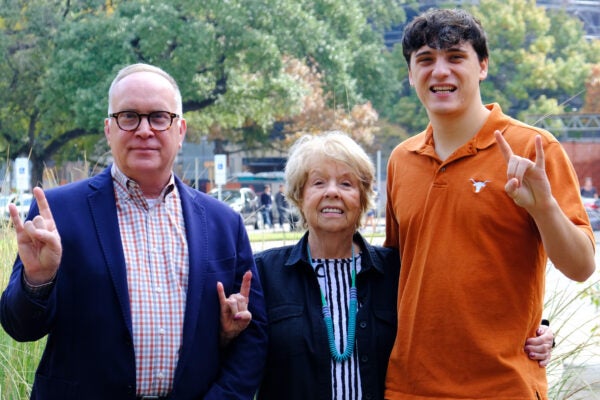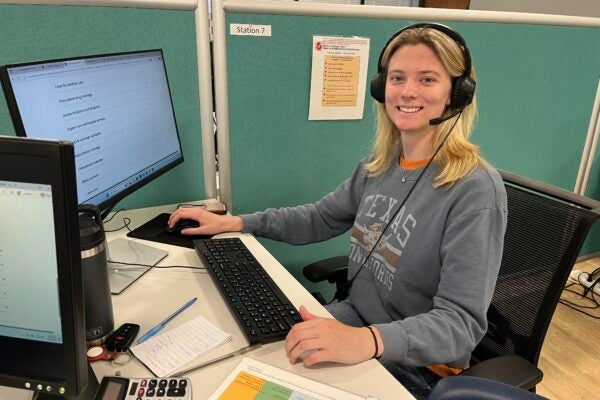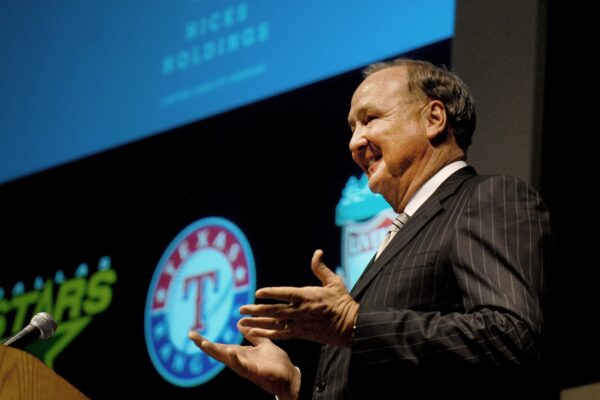Working Professionals
McCombs’ flexible MBA options draw job enhancers, switchers, and explorers
By Mary Ann Roser


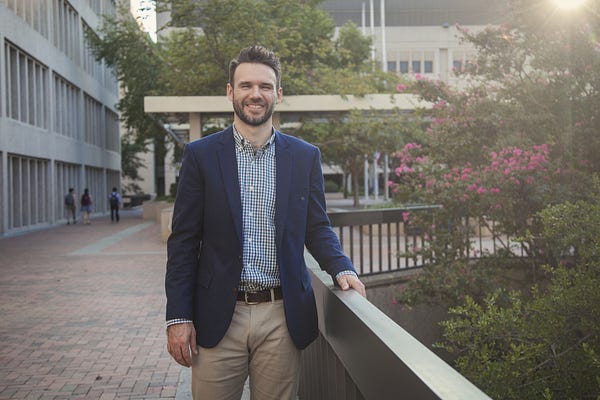
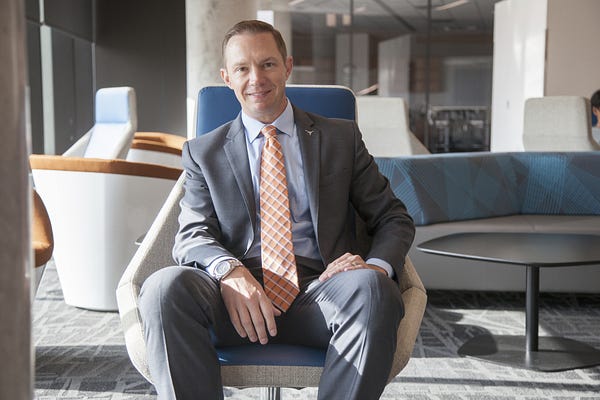
For Amy Nason, MBA ’19, of Austin, the McCombs Working Professional MBA program catalyzed a job switch to a coveted role and a salary that tripled in three years. For Bryan Berens, MBA ’19, of Dallas, the program opened the door to a consulting job at the firm where he most wanted to work. And for Jasmine Crespo, MBA ’19, of Houston, it launched a journey of self-discovery that led to a career change and a job she loves. “It’s easily the best decision I ever made,” Crespo says. All three say what they gained from the program went beyond advancing their careers and increasing their paychecks.
They learned important truths about themselves, made lasting friendships, and had experiences that broadened their world, including a re-quired week abroad to see how other countries do business.
“It was a tough two years in a lot of ways,” Berens says, referring to juggling a full-time job, rigorous schooling, and personal time that inevitably took a back seat. But it also was in-credibly fun, he says.
“I went in with a desire to learn and some vague ideas about where I wanted to go professionally. I left with lifelong friendships, greater clarity regarding my career goals, a new job that I’m extremely excited about, and far more learning than I could have imagined.”
Many schools offer flexible options for professionals who want an MBA but don’t want to exit the workforce for two years. While full-time student MBA enrollments are flat nationwide, demand is growing for working professional MBA programs and specialized business master’s programs in technology and other fields, according to the business school accrediting agency AACSB International.
The agency’s data show that 75 percent of the 517 schools worldwide responding to the organization’s survey offer at least one MBA option for working professionals. Of the same group, 21 percent offer at least one executive MBA program for upper-level business leaders.
McCombs offers both options. The Executive MBA program is geared to older working professionals with more years in the workforce and attracts about 50 to 60 students a year. The Working Professional program is geared toward younger workers. It draws about 235 entering students a year and is consistently ranked among the top 10 programs by U.S. News & World Report.
Although both programs offer general business curricula, the Working Professional MBA students dive more deeply into specific business roles and functions, while Executive MBA students gain more of a big-picture view, says Joe Stephens, senior assistant dean and director of the Working Professional and Executive MBA programs.
In Houston and Dallas, Working Professional MBA students attend classes every other Friday evening and all day that Saturday. In Austin, students attend every Monday and Tuesday evening. All of the students take the same core courses as full-time McCombs MBA students.
Wearing Different Hats
The program attracts three kinds of young professionals: career explorers, career changers, and career enhancers.“The students are constantly applying what they’re learning in real time,” Stephens says.
That was the beauty of the program for her, says Nason. “I would go to class on Monday and apply it on Tuesday. I used that MBA from day one.”
A Kansas City, Missouri, native, Nason received her BBA at La Salle University in Phil-adelphia and moved to Austin with her husband in 2015. She landed a job with software giant Oracle Corp. in business development, cold-calling 50 to 100 prospective customers a day and celebrating when one agreed to meet. She liked Oracle but wanted a change, and the idea of getting an MBA moved from the back of her mind to the front.
She didn’t look much beyond the Austin program. “There’s something about the UT vibe,” she says. Nason started the program in January 2017. Even before classes began, being accepted helped her leverage a project manager promotion at Oracle, she says. Then, a leadership course at McCombs primed her for another move up, to regional manager of business development.
“In this program, I learned that I like to wear multiple hats,” Nason says. “I like to change things.”
During her second school year, another company came knocking: Genpact, a professional services firm. The company recruits McCombs MBAs, but she initially declined an interview, saying the job sounded too vague. Genpact came back with a better-defined role — and a more attractive salary, she says.
For her job interview at the company’s New York headquarters, Nason was told to prepare a 15-minute presentation on a topic she was passionate about. She had spent two years polishing her presentation skills at McCombs and was psyched. Using pictures and diagrams, she talked about making pizza the way her Italian grandmother did. It was entirely different from the business talks most applicants give, and Nason nailed it. She started her new job months before she even graduated — with a vice president title. Now she divides her time between consulting and sales and is on Genpact’s leadership training track.
Company executives often seek her feedback, and, Nason says, “they take your opinion very seriously.”
Her salary has risen three-fold since she made sales calls at Oracle. “There’s no way I would make what I’m making today without that MBA,” she says.
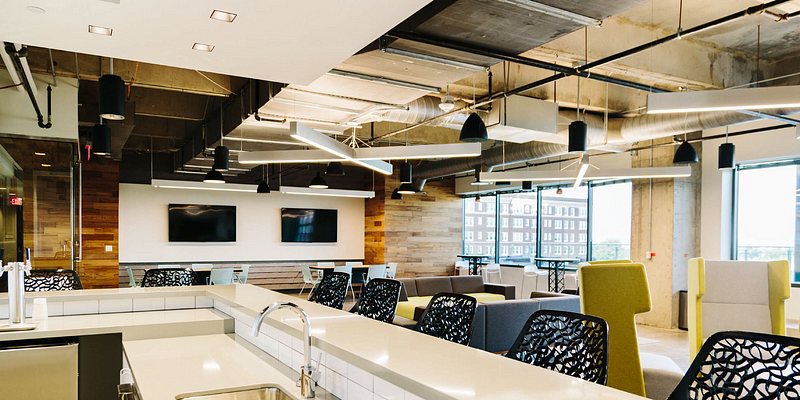
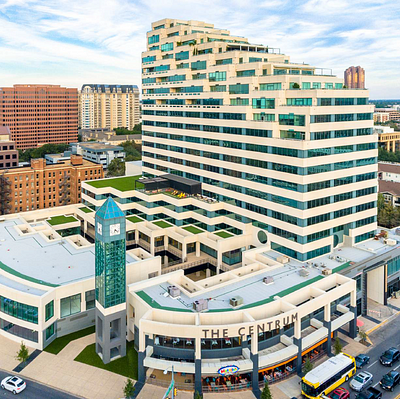

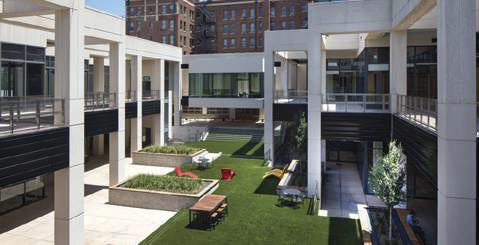
Moving Up And Out
In the past couple of years, more than 70 percent of McCombs Working Professional MBA students made a job change during the two years they were in the program or within three months of graduating, says Stefani Sereboff, director of working professional and executive MBA career management. On average, their salaries jump about 30 percent, while the number of people switching careers is rising too, she says.
Like Nason, Berens, 29, also switched companies.
A University of Arizona graduate with a bachelor’s degree in history, he taught with Teach for America and then moved to a job with the Dallas Independent School District in 2014, analyzing teacher recruitment, selection, and evaluation systems.
“I realized I knew very little about running large organizations,” he says. He thought an MBA would broaden his perspective; he looked into Southern Methodist University and UT Austin before deciding on McCombs. It had the academic rigor and emphasis on peer connections he wanted, Berens says.
Not long after he enrolled, he left the school district to become director of programs and innovation at Teach.org, which helps aspiring teachers navigate their path into the profession. Learning a new job and being in school again was an adjustment and “certainly not for the faint of heart,” says Berens. He’s also married and took on an optional MBA project in which he worked with a consulting firm for eight weeks. “It was a third full-time job,” counting school, he says.
“You don’t sleep much when you’re in these programs,” says program director Stephens, who graduated from a similar program in St. Louis. “I can relate to these students. It’s hard.”
But despite the demands on his time, Berens loved working on a team and found it to be “an incredibly joyful, fulfilling experience.” It also clarified what he wanted to do after graduating: work as a consultant.
Working professionals get unlimited access to career consultants at McCombs, Sereboff says. The students receive a curriculum guided by a career management framework that includes assistance with resumes, branding, and interviewing skills. They also get access to successful alumni, interested employers, and networking opportunities, she says.
Berens took advantage of the on-campus recruitment service and zeroed in on a few consulting firms, with Boston Consulting Group topping his list. He met with a BCG consultant in Austin, which led to a series of interviews with the firm and, ultimately, a job offer he accepted. It’s in the firm’s Dallas office, a two-minute walk from home.
“There’s no universe where I’d get an interview at BCG without the MBA program,” he says. His 100 percent pay jump will help him pay off his program loans faster.
Ten or more years ago, most working professional MBA students had their tuition paid by their companies, Stephens says. But after the recession hit in 2008, that flipped, with the vast majority of students now paying their own way.
Last year, McCombs began offering $10,000 scholarships each for 30 Working Professional students, with awards based on merit and consideration given to need, Stephens says. Program officials hope the scholarships, along with more targeted recruitment and events, will bring in more women and other underrepresented groups. Women students average between 20 and 35 percent of the total, while underrepresented minority enrollments have been as low as 5 to 7 percent and as high as 15 to 18 percent, depending on the city, Stephens says.
Self-Discovery
Like Berens, Crespo, 27, was ready to explore career options, but she wasn’t sure what she wanted. She just knew she hadn’t found her passion and wanted to be happier.
After graduating from St. Edward’s University in Austin with a BBA in 2012, Crespo struggled to find a niche, she says. She first worked for a family friend’s small financial firm but longed to be in the corporate world. She got her wish, landing an accounting job with an oil and gas company.
But accounting wasn’t her passion, nor did she see room to advance. She had thought about getting an MBA and decided it was time. She looked at Rice University and McCombs, and “truly fell in love with UT,” she says.
“I was going to be part of the full network and everything UT has to offer. I drank the Kool-Aid and I didn’t want to put it down.”
Like Berens and Nason, Crespo had to turn down personal invitations to make room in her life for school and work. “I missed a few trips, birthday parties, and the occasional date,” she says.
Yet, she loves school and “I don’t regret one minute of it,” Crespo says. “It’s fun and it’s an adventure.”
In one of her favorite classes, she learned that companies were crafting work environments to make employees happier. That “flipped the switch” for her, causing her to focus more on what was important to her, professionally and personally, she says.
“The program forces you to analyze everything as a whole,” Crespo says. “In more ways than one, the MBA totally changed my life.”
A McCombs career adviser introduced her to the global consulting firm Alvarez & Marsal, and nearly five months before graduating, she started a management job there.
“I’m enjoying it very much,” she says. “It all ties back to the class I loved during school.”
MBAs By The Numbers
Working Professional MBA
Program length: 2 years in Houston and Dallas; 2.5 years in Austin
Average age: 30
Minimum work experience required: 2 years
Average work experience of students: 8 years
Established: Dallas, 1999; Austin, 2000; Houston, 2005
Executive MBA
Program length: 2 years
Average age: 37
Minimum work experience required: 8 years
Average work experience of students: 14 years
Established: Austin, 1981
Support The Working Professional MBA Program
Only a handful of students receive financial support from their employers. The majority are left with significant student loan debt upon graduation. To provide assistance, Texas McCombs is raising funds for merit-based fellowships with a strong consideration for need. This encourages stronger applications, attracts more diverse students, and helps the school increase the program’s size and impact. For every dollar donated, the program will match it 1–1. To contribute, go to http://bit.do/WPMBA or call 512–232–2493.
This article appeared in the fall 2019 issue of McCombs magazine. Click on the link to see the full issue.
About this Post
Share:
